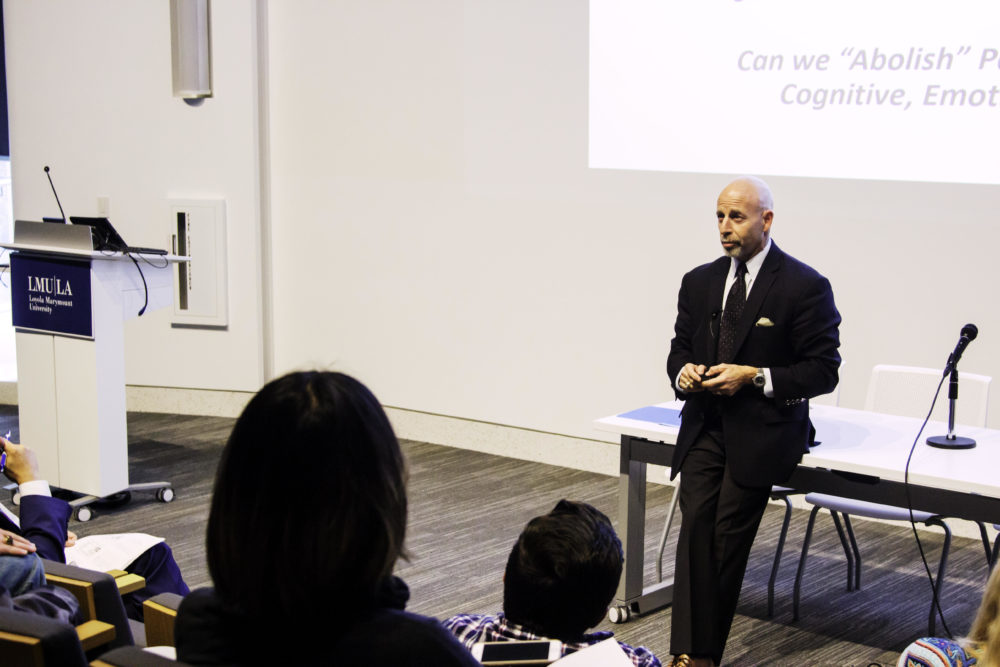
For the spring 2018 semester, the Bioethics Institute has been proud to host James Giordano, Ph.D. as the Anne & Austin O’Malley Visiting Chair. Giordano is Chief of the Neuroethics Studies Program and Professor in the Departments of Neurology and Biochemistry at Georgetown University. During his time at LMU, he taught the graduate level course “Neuroethics: Issues at the Intersection of Brain Science and Society;” offered several luncheon conversations to various departments; guest lectured in philosophy, psychology, biology, and engineering courses; published multiple papers; and presented the annual O’Malley Chair Lecture.
This year’s O’Malley Chair Lecture took place on March 20th, and was titled “Building Better Brains: Navigating Neuroscience with Ethics.” Speaking to over 200 faculty, students, and guests in the Life Science Auditorium, Giordano explored how the practice of ethics may guide new neuroscience research.
“Everything that you have ever hoped, everything that you have ever loved, everything that you have ever hated… all the wonderful things that you’ve done, all the not so wonderful things you’ve done, every dream, all the way from birth to the grave, is a function of the brain,” he said while instructing the audience to visualize holding their own brains in their outstretched cupped hands.
Over the last several decades, the field of neuroscience has become more and more sophisticated. Advances in neuroimaging allow scientists to assess not only brain structure, but also function. Discoveries resulting from the Human Genome Project have led to the identification of neuropsychiatric genes involved in neurological, emotional, cognitive, and behavioral disorders. New technologies have been developed to treat Parkinson’s disease, Huntington’s disease, dystonia, Tourette’s syndrome, obsessive compulsive disorder, depression, anxiety, and addiction.
Neuroscientists today understand the physiological and anatomical underpinnings of the brain. They understand how nerve cells and glial cells work and communicate. They have studied the complex patterns of neuropathways and neuro-architecture. However, the hard questions still remain: How does the great stuff of consciousness, emotion, and cognition arise from the grey stuff (i.e. the cells of the cranium)? Moreover, what does it mean to have a brain and be a mind? In this way, the brain represents one of the final frontiers.
In the face of this new frontier, Giordano poses the question of limitation. “If we change the status quo of brain biology, what will happen? If we utilize certain technologies, what might we lose? How far should we go? Are there natural breaks? Or will we just continue to bravely go where no one has gone before, just because we can? How much do we need to know before we go? And can we only go if we know?”
As a response to these questions, Giordano says “no new neuroscience without neuroethics.” His definition of neuroethics is twofold: first, it is the neuroscientific study of how humans engage in moral activity (human thought, activities, and morality), and second, it is the study of how neuroscientific research ought to pursue the good.
Giordano believes that the contributions of neuroethics may create a neuroscience that is principled, contributory to society, and integrative in bringing together the sciences and the humanities. Echoing his mentor, Edmund Pellegrino, he articulated that a “dialectic and dialogue are essential to the humane use of technology… knowledge can move us closer or divide us further.”
View Giordano’s presentation here.



